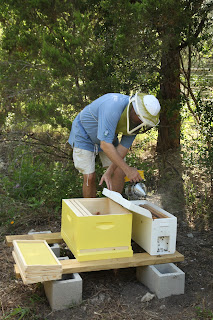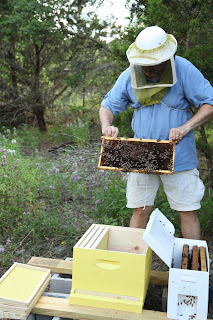OK, on to Day 2 of the Great Bee Adventure! Day 2 took place probably a week after Day 1, when I finally had enough time to go assemble all of the woodware that I ordered online.
Assembly Day was pretty easy, actually. The three hive boxes went together quickly, although the 30 frames took a bit longer. After I had done about a dozen frames, I developed a process and was able to get through the rest at a faster rate.
 |
| One hive box, full of frames and ready to go! |
 |
| This is what an assembled frame looks like. |
 |
| Two hive boxes on a bottom board. |
 |
This is almost the entire hive stack: bottom
board, two hive boxes, and a medium honey super.
They're just about ready to paint! |
 |
| This is the whole stack, with the lid. It's ready to paint! |
After doing all the assembly, I headed out to Lowe's to get paint. I picked a "stain covering" white sealer and a pastel yellow.
Here are pictures of the hive stack painted with the primer and then the yellow top coat.
That's it for now! Next up: deploying the hive box to its destination in our back yard, and loading bees into it!




















